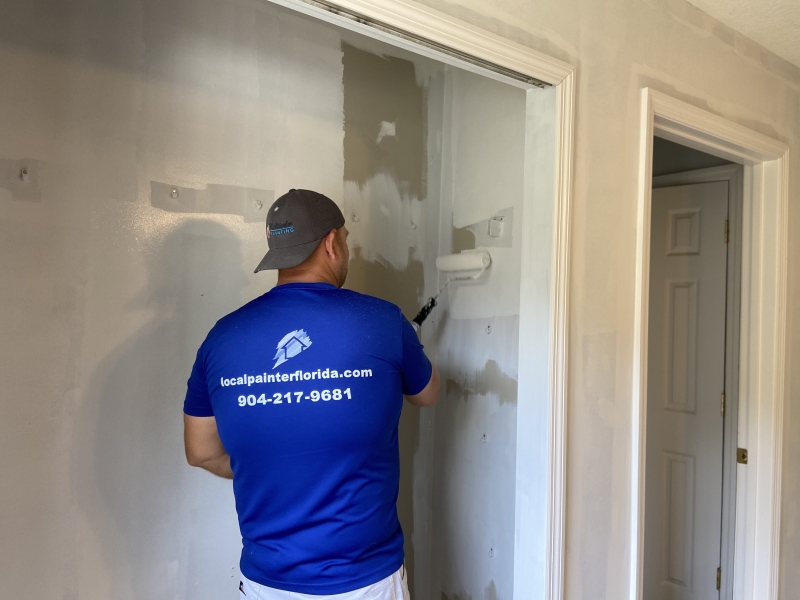Painting interior walls is an excellent way to refresh the look of your home. It is also a cost-effective way to give your home a new feel without breaking the bank. However, how often should you paint interior walls? This is a question that many homeowners ask. The answer depends on various factors, such as the type of paint, the condition of the walls, and the room’s usage. In this article, we will discuss how often you should paint interior walls and the factors to consider when deciding on the best schedule.
How often to paint interior walls?
When people think of renovating their home, they take into consideration how extensive the work will be. Demolishing or moving walls, replacing tiles in the bathroom, adding fixtures and so on. Of course, if such renovation is needed, it is best to do it before painting. However, wall painting alone is considered home renovation and is simpler and much less destructive to do.
With only paint, a brush, a roller, and masking tape, I’ll make the environment completely new. If you are wondering exactly what tools you need to successfully paint a wall, read my previous article: Wall painting tools and equipment – what you will need for interior wall painting

Signs It’s Time to Repaint Your Interior Walls
While there are no set rules for when exactly to repaint your interior walls, there are certain signs you can look out for that indicate it’s time for a fresh coat of paint. By being aware of these signs, you can ensure that your walls always look their best. Here are some common indicators that it’s time to repaint your interior walls:
- Faded or Discolored Paint: Over time, exposure to sunlight, air pollutants, and general wear can cause paint to fade or become discolored. If you notice significant color changes or uneven fading on your walls, it’s a clear sign that repainting is necessary to restore their vibrancy.
- Cracked or Peeling Paint: Cracks and peeling paint are not only unsightly but also indicate underlying issues with the paint’s adhesion. When paint starts to crack or peel, it compromises the protective layer on your walls, leaving them vulnerable to moisture and damage. Repainting is essential to maintain the integrity of your walls.
- Visible Stains or Water Damage: Stains and water damage can occur due to leaks, spills, or high humidity levels. Even after cleaning, certain stains may be challenging to remove completely. Repainting the affected areas not only improves the appearance but also prevents further damage caused by moisture penetration.
- Wear and Tear: High-traffic areas are more prone to scuffs, dents, and general wear and tear. If you notice significant damage, such as scratches or holes, it’s a good idea to repaint those areas. Regular touch-ups can help extend the lifespan of your walls and keep them looking fresh.
- Outdated Color or Style: Sometimes, the need for repainting stems from a desire to update the look and feel of your home. If you feel that your current wall color or style is outdated or no longer matches your aesthetic preferences, a fresh coat of paint can transform the ambiance and breathe new life into your space.
- Mold or Mildew Growth: The presence of mold or mildew on your walls is not only a health concern but also an indication of underlying moisture issues. If you notice mold or mildew growth, it’s crucial to address the source of moisture and repaint the affected areas to prevent further spread and damage.
By being vigilant and observant, you can identify these signs and take timely action to repaint your interior walls. Regular maintenance and proactive repainting will ensure that your walls remain in excellent condition, enhancing the overall beauty and longevity of your home.
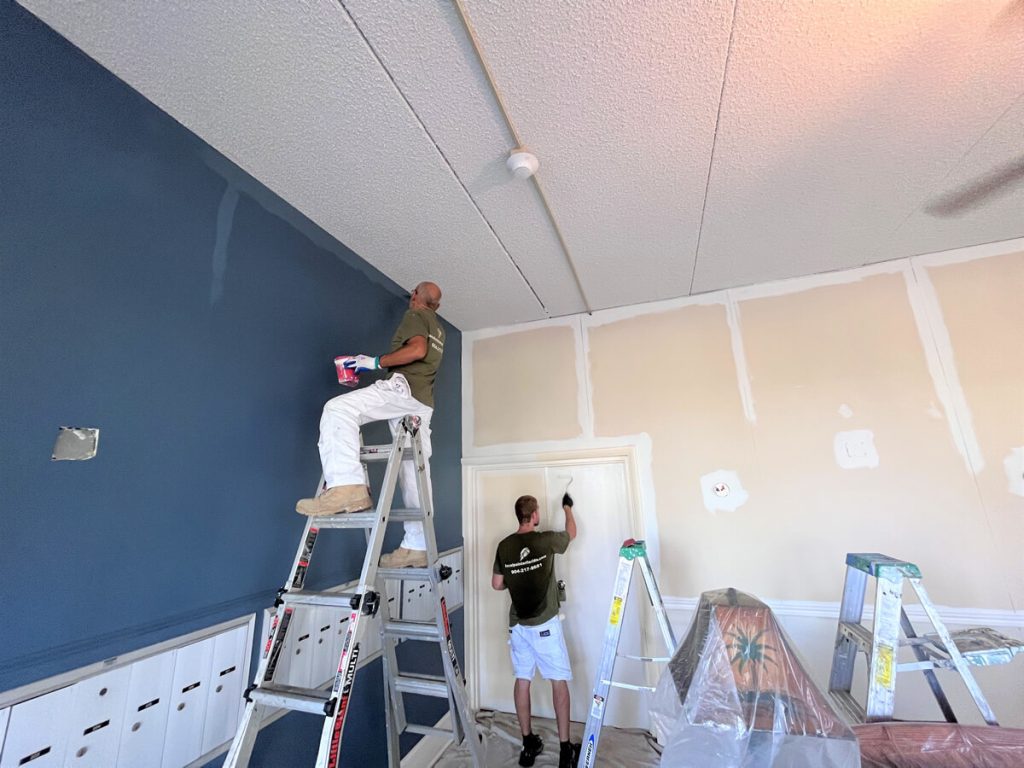
How often should I repaint?
It depends on many things. Different rooms and different wall surfaces should be repainted at different intervals. But in general, it is worth repainting every 5 years or so. It depends on your lifestyle, your family, and the function of the room; how much wear and tear or dirt gets put on the walls. Let’s look at the factors that shape the need to repaint from room to room
How often to paint a busy hallway
The walls of entryways or hallways where there is a lot of traffic and movement will get dirty and damaged at a quicker rate. These points are where your friends, relatives and guests first enter your home. This is their first impression of your home, and a little bit of you. So plan to clean and paint here more often!
- The hallway may need repainting every 2-4 years
Painting the kitchen and kitchen furniture
Stains in your kitchen may be more frequent due to frying, cooking, spilling grease, etc. Your kitchen cabinets are exposed to these increased stresses, but don’t worry – I can help you refinish your kitchen cabinets too.
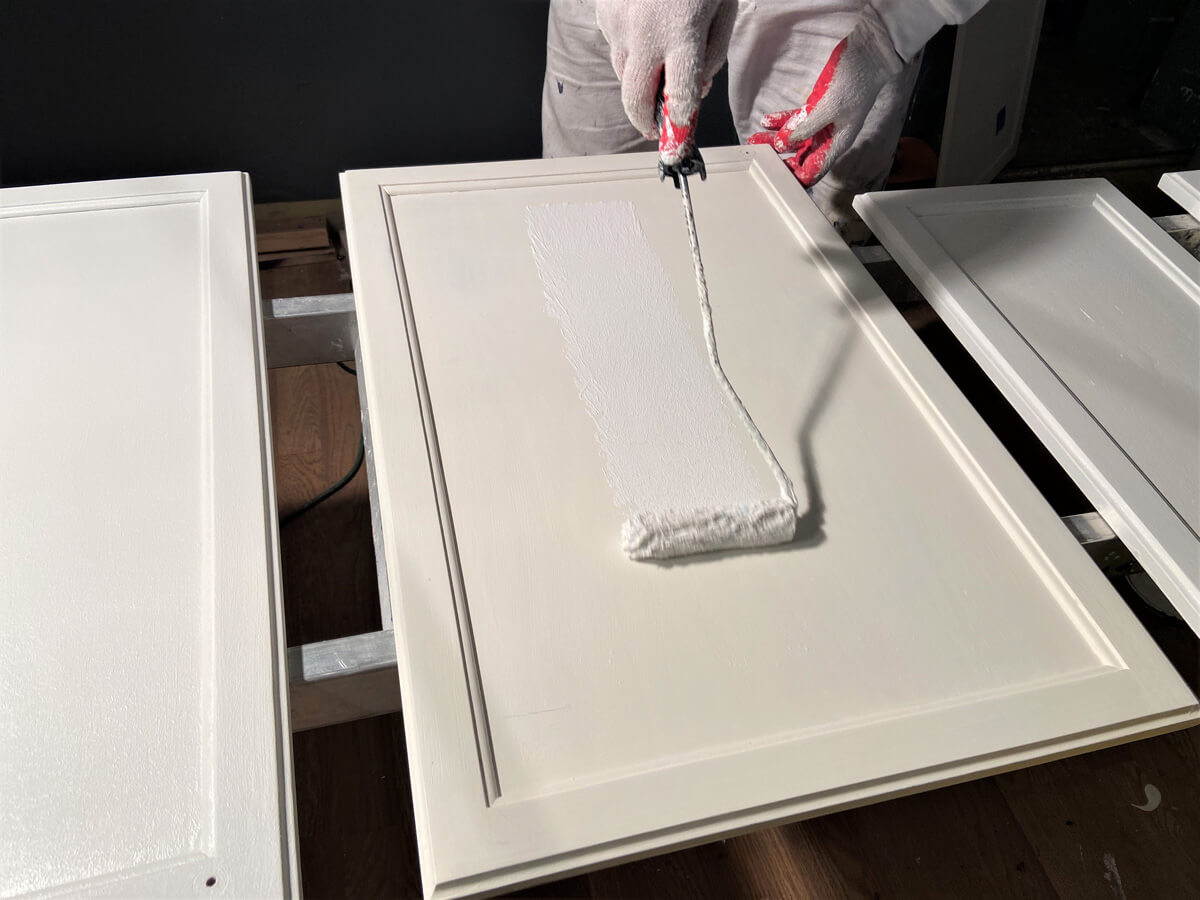
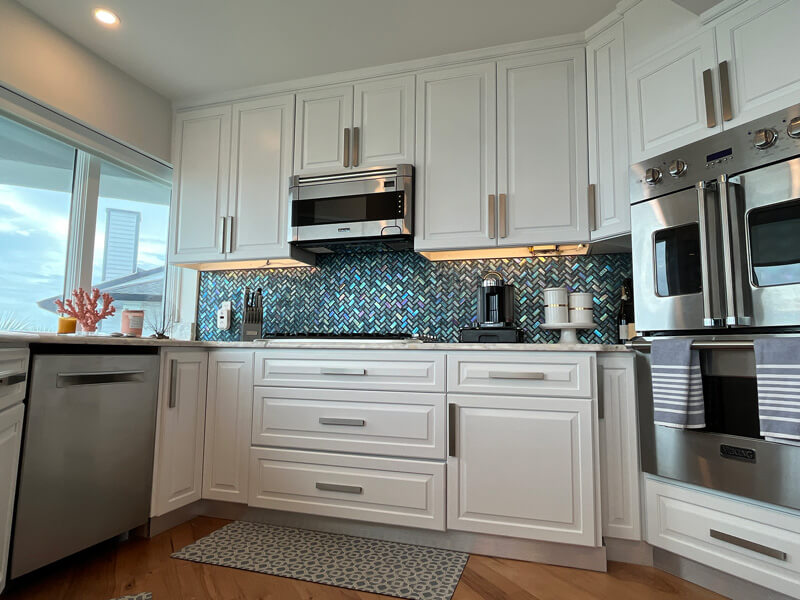
The neighboring dining room area can also be susceptible to these factors.
- In the kitchen, repainting is usually necessary every 3-4 years.
On this page you can see my previous kitchen cabinet painting references.
Painting the bathroom or fighting mold
In the bathroom, steam and water vapor can cause discoloration and mold. In this case, using a specialized paint is essential. I write about this in detail in my article Let’s paint the bathroom. In addition to the application of a wipeable, mold-resistant paint, it helps if your bathroom is properly ventilated. If this is not possible, you can use a fume extractor.
- Like the kitchen, the bathroom should be repainted every 3-4 years
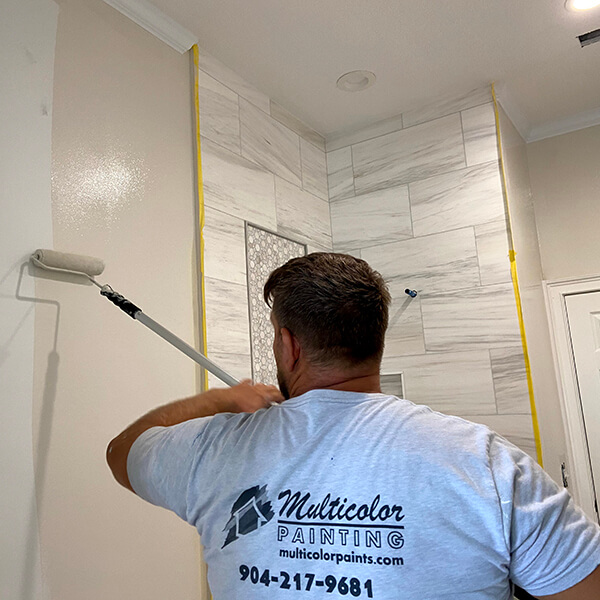
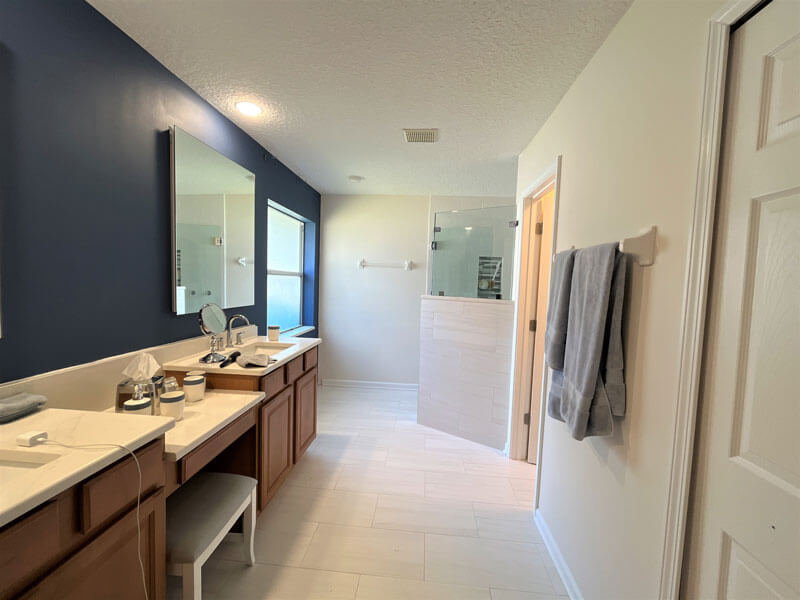
Painting the bedroom and children’s room
Your bedroom will need painting less often, but a child’s room may need painting sooner. Children grow quickly and their style and tastes change. Pink may be their favorite color now, but in a year they may be a fan of blue. Also, children are less attentive to keeping walls clean when they play, so you can get rid of stains, scratches and dents on the walls when you redecorate. How often should you paint interior walls?
- I recommend painting the bedroom every 5 years
- Painting the children’s room is usually needed every 2-3 years
Painting the ceiling
The ceiling should be painted every 7-10 years. It is usually done when the entire interior is being repainted, or when all the walls of a particular room are being repainted.


We simply need change
If you’re bored of the current color, or as a new resident you do not like what the previous owner left behind, don’t hesitate for a moment! Start transforming the interior of your house or room to make it our own. Choosing the right wall color for you is an important task because the effect of color has a big impact on our mood and everyday life.
Painting doors and window frames
If you’ve already painted the walls of the rooms, you might want to think about repainting the door and window frames. It’s best to categorize this as a renovation task. When you have finished repainting your walls, giving your trim a fresh coat of color will add a lot to the quality and the feeling of the overall cleanliness of the room.
FAQs:
Can I paint my walls less frequently than the recommended guidelines?
A. Yes, you can. However, painting your walls less frequently than recommended may lead to wear and tear, discoloration, and fading. Additionally, if you wait too long, you may need to do more extensive repairs before painting.
Can I paint my walls more frequently than the recommended guidelines?
A. Yes, you can. However, painting your walls more frequently than recommended may not be cost-effective. Additionally, it may cause damage to the walls, such as the buildup of paint layers.
Can I paint over existing paint?
A. Yes, you can paint over existing paint. However, you should ensure that the existing paint is in good condition and not peeling or chipping. Additionally, you should clean the walls before painting to ensure that the new paint adheres well.
If you think it’s time to paint, call us 1(904)217-9681 and ask for a personalized quote!
Related blog articles:
Three Steps to a Successful Home Renovation
How Can I Clean Walls With Flat Paint?

